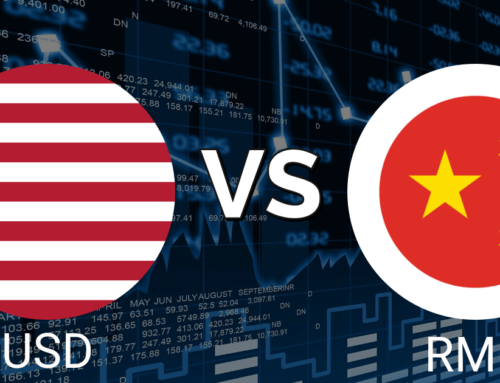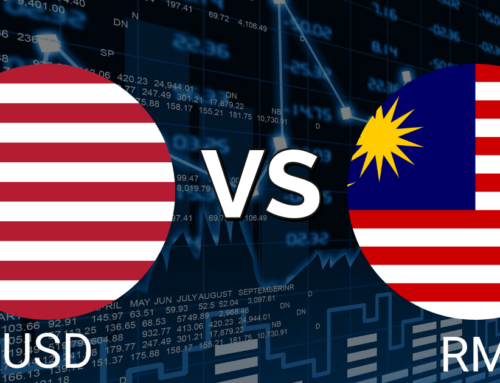
The USD (dollars) and CNY (yuan) is the primary ‘paper currencies’ of the West and East. They act as mediums of exchange and hence have been the most influential currencies of the world. However, the history of both these currencies is interesting. For instance, the US dollar was originally known as a ‘thaler’, which was introduced by Spanish explorers in New Spain and later exported to Asia.
CNY Overview
For a variety of reasons, the Chinese currency is a hot topic right now. Not only does it characterize one of the world’s largest economic superpowers, but it is also at the center of one of China’s most controversial issues today.
The Chinese yuan has been regarded as undervalued by most economists for many years. However, the International Monetary Fund (IMF) stated in the summer of 2015 that owing to its current appreciation, the Chinese currency was no longer undervalued against the dollar.
The term for Chinese currency is “yuan” (CNY), and the national people’s renminbi (RMB) is known as “renminbi.” While China’s official money is the renminbi, which serves as a medium of exchange, the yuan is the country’s unit of account in its economic and financial system.
The Rise of Renminbi
The People’s Bank of China, under the Communist Party of China, was the first to issue renminbi in December 1948.
By 1949, the People’s Bank of China was already deep in a civil war with the Chinese Nationalist Party, which had its own currency, and the renminbi was used to stabilize Communist-controlled regions that aided in a Communist victory.
Following the Nationalists’ downfall in 1949, China’s new regime sought to eliminate excessive inflation that had plagued the old regime by rationalizing its financial system and concentrating foreign exchange administration.
RMB Second Issue
In 1955, China’s central bank, the People’s Bank of China (PBOC), released a second series of renminbi that was accepted at a rate of one new RMB to 10,000 old RMB.
The third series of RMB was created in 1962, the first to employ multi-color printing technology and hand-engraved printing plates.
During this time, the exchange value of the RMB was unrealistically set with a number of Western currencies, creating a substantial black market for foreign currency transactions.
In the 1980s, China’s economy underwent significant changes and the RMB was devalued, making it more liquid. The fourth series of RMB was released in 1987 with a watermark, magnetic ink, and fluorescent ink.
The fifth series of RMB, which was released in 1999 and featured Mao Zedong on all denominations, is one such example.
Unpegging RMB
Despite accusations from the United States, China pegged the RMB to the US dollar at roughly 8.3 RMB per dollar between 1997 and 2005.
On July 21, 2005, the People’s Bank of China announced that it would remove the dollar peg and establish a flexible exchange rate mechanism. The RMB was subsequently re-examined and set at 8.1 RMB per $.
The Differences Between CNY and RMB
One issue continues to perplex many: Is China talking about the internationalization of its currency, or is it simply considering doing so? Is the renminbi (RMB) a distinct currency from the yuan (¥)?
The People’s Republic of China’s official currency is the renminbi, which is sometimes abbreviated as RMB. The term yuan refers to a unit of money. Renminbi and yuan are frequently interchanged.
In December 1948, the Communist Party of China established the People’s Bank of China and issued the country’s first RMB, about a year before seizing power from the Kuomintang. The Japanese term for currency is ryuo, and the abbreviation RMB is widespread. A shopkeeper in China may express prices in terms of kuai, which refers to “pieces,” and is comparable to how Americans speak about money using “bucks.”
The yuan is the measure of value. The largest banknote is 100 yuan, followed by 50 yuan, 20 yuan, 10 yuan, 5:1 (5 jiao), 2 jiao and 1 jia. One dollar may be broken down into one hundred fen and jiao. A jiao is the smallest unit of money in China, worth 0.0507166571 yuan (about $0.10). There are 10 jiao in a yuan (about similar to dimes in a dollar), and 100 fen make up a yuan (similar to pennies in a dollar). Both coins and bills have been created.
The yuan is often compared to the British pound sterling, or Federal Reserve notes to the US dollar. Not Federal Reserve bank notes, sterling, or renminbi are used in any exchange of prices; rather, the dollar, pound, or yuan is always expressed. The price of anything would be $120, £100, or ¥150.
USD News
- Official Melania Meme price today, MELANIA to USD live price, marketcap and chart - CoinMarketCapon January 22, 2025 at 11:48 pm
Official Melania Meme price today, MELANIA to USD live price, marketcap and chart CoinMarketCap
- GBP/USD eases back as markets tiptoe through the midweek - FXStreeton January 22, 2025 at 11:15 pm
GBP/USD eases back as markets tiptoe through the midweek FXStreet
- Gold grinds unconvincingly higher, USD finds support - FOREX.com USon January 22, 2025 at 11:08 pm
Gold grinds unconvincingly higher, USD finds support FOREX.com US
- USD/CAD posts modest gains above 1.4350 as traders assess Trump 2.0 - FXStreeton January 22, 2025 at 11:05 pm
USD/CAD posts modest gains above 1.4350 as traders assess Trump 2.0 FXStreet
- Luxury Goods Market Size is Expected to Reach USD 480.54 - GlobeNewswireon January 22, 2025 at 11:02 pm
Luxury Goods Market Size is Expected to Reach USD 480.54 GlobeNewswire
CNY News
- Over 100 cats were rescued from a home in Madison County, Sunday, Jan. 19, 2024. Two people lived and slept in a bedroom with the cats, according to CNY Cat Coalition staff. - syracuse.comon January 22, 2025 at 8:12 pm
Over 100 cats were rescued from a home in Madison County, Sunday, Jan. 19, 2024. Two people lived and slept in a bedroom with the cats, according to CNY Cat Coalition staff. syracuse.com
- What to Do Over CNY in Guangzhou - That's Onlineon January 22, 2025 at 6:48 pm
What to Do Over CNY in Guangzhou That's Online
- Bessent's Investment Strategy: Long Positions in EUR, JPY, and CNY - Blockchain.Newson January 22, 2025 at 6:20 pm
Bessent's Investment Strategy: Long Positions in EUR, JPY, and CNY Blockchain.News
- Bessent's Long Position on EUR, JPY, and CNY - Blockchain.Newson January 22, 2025 at 6:15 pm
Bessent's Long Position on EUR, JPY, and CNY Blockchain.News
- Analysis of Bessent's Long Positions in EUR, JPY, and CNY - Blockchain.Newson January 22, 2025 at 6:15 pm
Analysis of Bessent's Long Positions in EUR, JPY, and CNY Blockchain.News


